 |
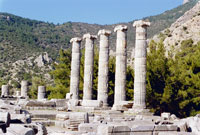 |
|
The first establishments in Priene go back till 2000 BC. According to ancient documents, these first settlers were the Banians who mixed with the Lonians. In the Archaic period, the city's location may have been nearer to Miletos on the delta of the Buyuk Menderes (Meander). Later the city moved in the direction of the Mykale Mountains' slope. |
|
| The name "Priene" is thought to have a pre-Greek origin when the Cretan islands, ''Praisos and Prianson" had relations with Priene. Before becoming one of the 12 members of the Ionian Confederation and participating to the "Ionian Rebellion", Priene had first been a Lydian dominion for several centuries. |
|
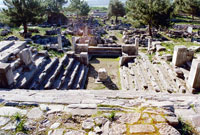 |
|
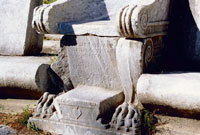 |
|
As the city had been demolished, its restoration has been planned by the famous city planner and architect, Hippodamos, who used for the first time the "Grating System": all the constructions were turned to the South in order to benefit a maximum of the day light. |
|
| The roads were crossing perpendicularly to give the best ventilation system to the city. Approx. 283 BC, a border quarrel arose between Priene and the Greek island Samos. It was only solved one century later when both parties accepted to become Roman vassals. |
|
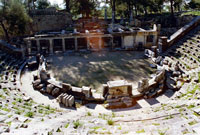 |
|
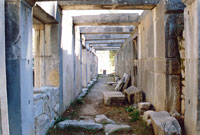 |
|
Since then, Priene was under control of the Bergamian King, Attalos II, who was to return the city to the Romans after his death. Due to endless wars and the alluviums that were invading the city, Priene was worn out and abandoned completely in the XIIIth century AD. |
|
|
 |
|
|
|
